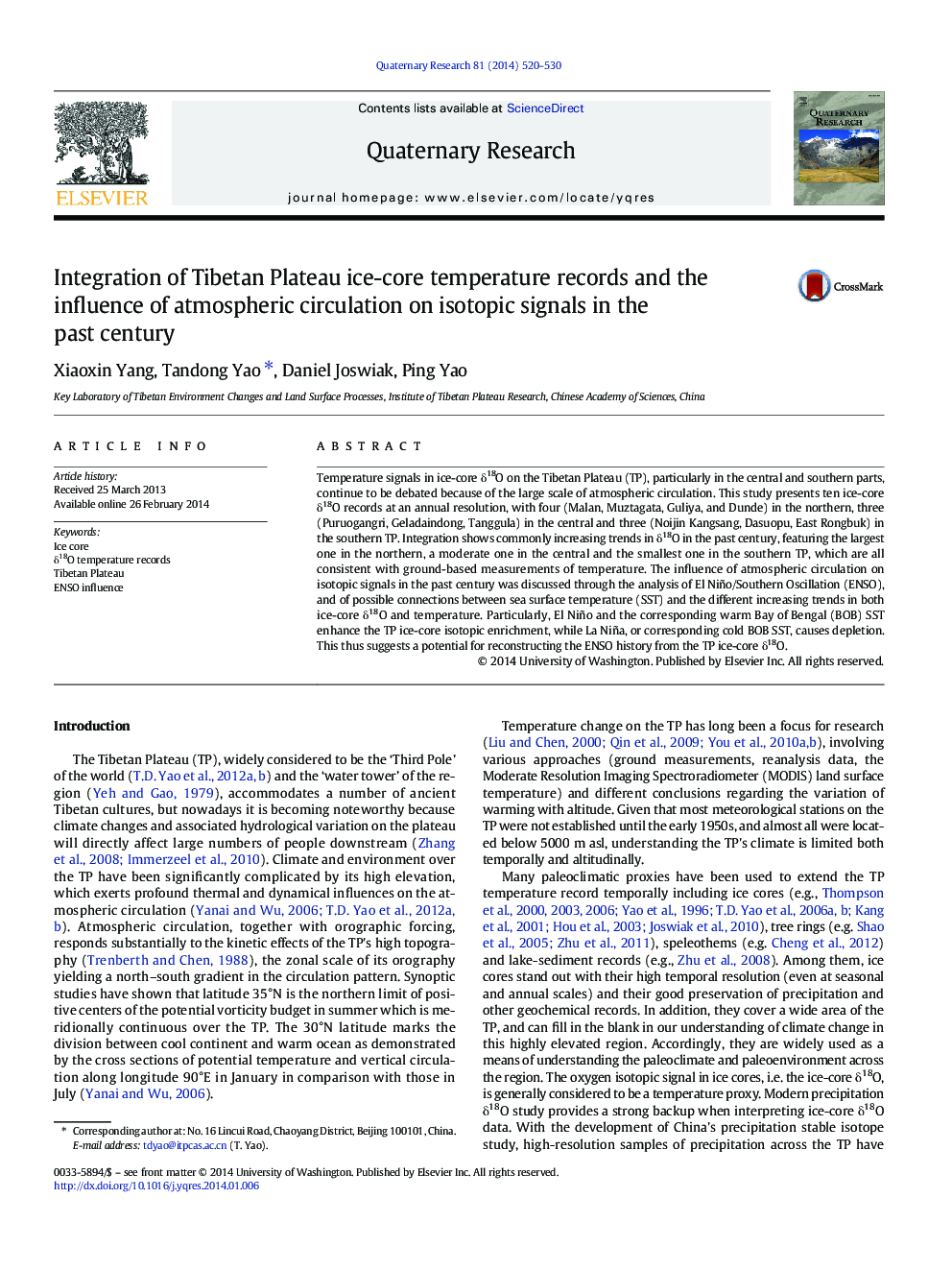| Article ID | Journal | Published Year | Pages | File Type |
|---|---|---|---|---|
| 1045171 | Quaternary Research | 2014 | 11 Pages |
Temperature signals in ice-core δ18O on the Tibetan Plateau (TP), particularly in the central and southern parts, continue to be debated because of the large scale of atmospheric circulation. This study presents ten ice-core δ18O records at an annual resolution, with four (Malan, Muztagata, Guliya, and Dunde) in the northern, three (Puruogangri, Geladaindong, Tanggula) in the central and three (Noijin Kangsang, Dasuopu, East Rongbuk) in the southern TP. Integration shows commonly increasing trends in δ18O in the past century, featuring the largest one in the northern, a moderate one in the central and the smallest one in the southern TP, which are all consistent with ground-based measurements of temperature. The influence of atmospheric circulation on isotopic signals in the past century was discussed through the analysis of El Niño/Southern Oscillation (ENSO), and of possible connections between sea surface temperature (SST) and the different increasing trends in both ice-core δ18O and temperature. Particularly, El Niño and the corresponding warm Bay of Bengal (BOB) SST enhance the TP ice-core isotopic enrichment, while La Niña, or corresponding cold BOB SST, causes depletion. This thus suggests a potential for reconstructing the ENSO history from the TP ice-core δ18O.
